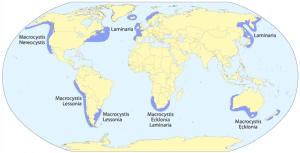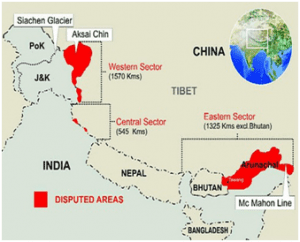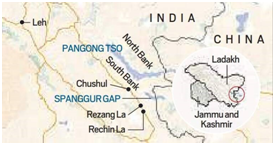POLITY AND GOVERNANCE
1. KERALA GOVERNMENT’S BILL TO REMOVE THE GOVERNOR AS CHANCELLOR OF STATE UNIVERSITIES
THE CONTEXT: Recently, Kerala government has tabled University Laws (amendment) Bill in the State Assembly to amend laws relating to the governance of State universities and remove Governor as the Chancellor of State universities.
THE EXPLANATION:
What is the role of the Chancellor in public universities?
- State public universities are established through laws passed by state legislatures. In most laws the Governor has been designated as the Chancellor of these universities. The Chancellor functions as the head of public universities and appoints the Vice-Chancellor of the university.
- Further, the Chancellor can declare invalid, any university proceeding which is not as per existing laws. In some states (such as Bihar, Gujarat, and Jharkhand), the Chancellor has the power to conduct inspections in the university.
- The Chancellor also presides over the convocation of the university and confirms proposals for conferring honorary degrees. This is different in Telangana, where the Chancellor is appointed by the state government.
Does the Governor have discretion in his capacity as Chancellor?
- In 1997, the Supreme Court held that the Governor was not bound by the aid and advice of the Council of Ministers, while discharging duties of a separate statutory office (such as the Chancellor).
- The Sarkaria and Punchhi Commission also dealt with the role of the Governor in educational institutions. Both Commissions concurred that while discharging statutory functions, the Governor is not legally bound by the aid and advice of the Council of Ministers. However, it may be advantageous for the Governor to consult the concerned Minister.
- The Sarkaria Commission recommended that state legislatures should avoid conferring statutory powers on the Governor, which were not envisaged by the Constitution. The Punchhi Commission observed that the role of Governor as the Chancellor may expose the office to controversies or public criticism. Hence, the role of the Governor should be restricted to constitutional provisions only.
Recent developments
Recently, some states (WE, TN, KL )have taken steps to reduce the oversight of the Governor in state public universities. In April 2022, the Tamil Nadu Legislative Assembly passed two Bills, to transfer the power of appointing the Vice-Chancellor (in public universities) from the Governor to the state government. As of June 8, 2022, these Bills have not received the Governor’s assent.
Connect the dots:
- Sarkaria Commissions
- Punchhi Commission
- Role of UGC
ENVIRONMENT, ECOLOGY AND CLIMATE CHANGE
2. THE SIGNIFICANCE OF KELP FORESTS
THE CONTEXT: According to the new study, ocean warming disrupts early-stage development of Giant Kelp, the largest marine algae that are intrinsic to sea life, leading to rapid decline in kelp forests across the world.
THE EXPLANATION:
- The world has lost much of its kelp forests in the last century to rising sea temperatures, but
 the mechanism of deterioration was not fully understood by scientists.
the mechanism of deterioration was not fully understood by scientists. - The Giant Kelps reproduce by releasing single-cell units called spores that grow into ‘germ tubes’ that gather nutrients and develop into adults.
- At higher temperatures, spore release increased but “spore settlement, germination and germ-tube length” were negatively impacted, the researchers found. The decline of each part was significant at temperatures above 23.8 degrees Celsius, 21.7˚C, and 19.8˚C respectively.
Kelp Forest
- Kelp forests are underwater areas with a high density of kelp. They are recognized as one of the most productive and dynamic ecosystems on Earth. Smaller areas of anchored kelp are called kelp beds. Kelp forests occur worldwide throughout temperate and polar coastal oceans. They are large brown algae seaweeds. They grow in “underwater forests” in shallow oceans.
- Kelp forests provide food and shelter for thousands of species. Marine heat waves are periods of extremely high temperatures in the ocean. These events are linked to coral bleaching, sea grass destruction, and loss of kelp forests, affecting the fisheries sector adversely.
- An underwater survey showed that 85% of the corals in the Gulf of Mannar near the Tamil Nadu coast got bleached after the marine heat wave in May 2020. Emerging studies have reported their occurrence and impacts in the global oceans, but are little understood in the tropical Indian Ocean.
Distribution:

3. THE WILDLIFE (PROTECTION) AMENDMENT BILL 2021
THE CONTEXT: Recently, the Wildlife (Protection) Amendment Bill, 2021 was passed in Rajya Sabha that seeks to provide for implementation of the Convention on International Trade in Endangered Species of Wild Fauna and Flora (CITES).
THE EXPLANATION:
- The Wildlife (Protection) Amendment Bill, 2021 was introduced in Lok Sabha by the minister of environment, forest and climate change on December 2021, amends the Wild Life (Protection) Act, 1972.
- The Bill seeks to increase the species protected under the law, and implement the Convention on International Trade in Endangered Species of Wild Fauna and Flora (CITES).
Key features of the Bill include:
- Rationalising schedules: Currently, the Act has six schedules for specially protected plants (one), specially protected animals (four), and vermin species (one).The Bill reduces the total number of schedules to four by: (i) reducing the number of schedules for specially protected animals to two (one for greater protection level), (ii) removes the schedule for vermin species, and (iii) inserts a new schedule for specimens listed in the Appendices under CITES.
|
Type of Violation |
1972 Act |
2021 Bill |
| General violation |
Up to Rs 25,000 |
Up to Rs 1,00,000 |
| Specially protected animals |
At least Rs 10,000 |
At least Rs 25,000 |
- Obligations under CITES: The Bill provides for the central government to designate a: (i) Management Authority, which grants export or import permits for trade of specimens, and (ii) Scientific Authority, which gives advice on aspects related to impact on the survival of the specimens being trade.
- Invasive alien species: The Bills empowers the central government to regulate or prohibit the import, trade, possession or proliferation of invasive alien species.
- Control of sanctuaries: The Act entrusts the Chief Wildlife Warden to control, manage and maintain all sanctuaries in a state. The Chief Wildlife Warden is appointed by the state government. The Bill specifies that actions of the Chief Warden must be in accordance with the management plans for the sanctuary.
- Conservation reserves: Under the Act, state governments may declare areas adjacent to national parks and sanctuaries as a conservation reserve, for protecting flora and fauna, and their habitat. The Bill empowers the central government to also notify a conservation reserve.
- Surrender of captive animals: The Bill provides for any person to voluntarily surrender any captive animals or animal products to the Chief Wildlife Warden. No compensation will be paid to the person for surrendering such items. The surrendered items become property of the state government.
- Penalties: The Act prescribes imprisonment terms and fines for violating the provisions of the Act. The Bill increases these fines.
Connect the dots:
- CITES
- Schedules under WLP Act 1972.
SECURITY ISSUES
4. THE NEW INDIA-CHINA TAWANG CRISIS
THE CONTEXT: India’s Defense Minister has recently addressed on the floor of the Parliament about the Chinese troops “encroachment into Indian territory” and “unilaterally tried to change the status quo” along the disputed border near the Yangtze area.
THE EXPLANATION:
What is the source of tension?
- In September 2022, Indian and Chinese troops disengaged in the Gogra Hotspring area of Eastern Ladakh, the last of the acknowledged “friction points” that were discussed over 16 rounds of military commander level talks that began in May 2020, after Chinese incursions at several points in the area.
- Tensions in Ladakh continues over the build-up of Chinese troops in Depsang, intrusions in Demchok and the rapid infrastructure build up by the Chinese, including two bridges over the Pangong lake that will reduce Chinese mobilization time on the southern bank.
- The incident came days after China expressed objection to Operation Yudh abhyas, an India-US joint military exercise at Auli in the Uttarakhand hills, claiming it was a violation of 1993 and 1996 border agreements.
- The continuing military tensions at different points along the 3,000 km-LAC comes as India kicked off a series of events as part of its presidency of the G20, a grouping of the world’s leading economies that includes China.
What is Line of Actual Control?
China and India share a disputed 3,440 km (2,100 mile) long de facto border – called the Line of Actual Control, or LAC – which is poorly demarcated.
The LAC is generally divided into three sectors:
- The western sector between Ladakh on the Indian side and the Tibet and Xinjiang autonomous regions on the Chinese side. This sector was the location of the 2020 China–India skirmishes.
- The middle sector between Uttarakhand and Himachal Pradesh on the Indian side and the Tibet autonomous region on the Chinese side.
- The eastern sector between Arunachal Pradesh on the Indian side and the Tibet autonomous region on the Chinese side. This sector generally follows the McMahon Line.
VALUE ADDITION:
Pangong lake: Pangong means conclave in Ladakhi and Tso means lake in Tibetan language.Situated at over 14,000 feet, the Lake is about 135 km long.
It is formed from Tethys geosyncline.
SECURITY ISSUES
5. WHAT IS PANDORA VIRUS?
THE CONTEXT: Scientists have recently revived several large viruses that had been buried in the frozen Siberian ground (permafrost) for tens of thousands of years. The youngest virus to be revived was a sprightly 27,000 years old. And the oldest – a Pandoravirus – was around 48,500 years old. This is the oldest virus ever to have been revived.
THE EXPLANATION:
- Pandoravirus is a genus of giant virus, first discovered in 2013. It is the second largest in physical size of any known viral genus. Pandoraviruses have double stranded DNA genomes, with the largest genome size (2.5 million base pairs) of any known viral genus.
- Pandoraviruses are oval in shape and are about 1 micrometer (1000 nanometers) in length. Other viruses range from 25 to 100 nanometers. In addition to being large physically, Pandoraviruses have a large genome made up of 2,500 genes, compared to only 10 genes on average in other viruses. For example, the Influenza A virus contains 7 genes and HIV contains only 9 genes.
- Pandoraviruses do not seem to be harmful to humans.
- They are mostly found in marine environments, infecting amoebae. One reason for their only relatively recent discovery is because they exist in environments that are not well studied. Pandoraviruses, like other marine viruses, prey on plankton, which are organisms that live in the water column and form the basis of the food chain for other marine species.
- More study and research need to be done in order to confirm the prevalence of Pandoraviruses in different environments. Currently, not much is known about their role in marine ecosystems.

 the mechanism of deterioration was not fully understood by scientists.
the mechanism of deterioration was not fully understood by scientists.